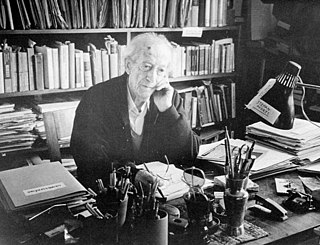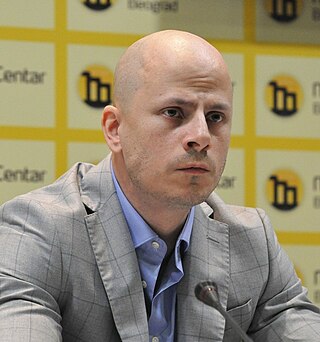Related Research Articles

Yugoslavia was a country in Southeast and Central Europe that existed from 1918 to 1992.

Naïve art is usually defined as visual art that is created by a person who lacks the formal education and training that a professional artist undergoes. When this aesthetic is emulated by a trained artist, the result is sometimes called primitivism, pseudo-naïve art, or faux naïve art.

The Socialist Federal Republic of Yugoslavia (SFRY), commonly referred to as SFR Yugoslavia or Socialist Yugoslavia or simply as Yugoslavia, was a country in Central and Southeast Europe. It emerged in 1945, following World War II, and lasted until 1992, breaking up as a consequence of the Yugoslav Wars. Spanning an area of 255,804 square kilometres (98,766 sq mi) in the Balkans, Yugoslavia was bordered by the Adriatic Sea and Italy to the west, Austria and Hungary to the north, Bulgaria and Romania to the east, and Albania and Greece to the south. It was a one-party socialist state and federation governed by the League of Communists of Yugoslavia, and had six constituent republics: Bosnia and Herzegovina, Croatia, Macedonia, Montenegro, Serbia, and Slovenia. Within Serbia was the Yugoslav capital city of Belgrade as well as two autonomous Yugoslav provinces: Kosovo and Vojvodina.

Branko Ćopić was a Yugoslav writer. He wrote poetry, short stories and novels, and became famous for his stories for children and young adults, often set during World War II in revolutionary Yugoslavia, written with characteristic Ćopić's humor in the form of ridicule, satire and irony.

Petar Lubarda ; 27 July 1907 – 13 February 1974) was a Serbian painter born in Ljubotinj Cetinje.
Gesner Abelard was a Haitian painter and sculptor. Born in Port-au-Prince, Abelard began life as a mechanic, then studied painting and sculpture at the Industrial School of Port-au-Prince under the painter Humberman Charles. He became a member of the Haitian Centre d'Art in 1948. In 1949, he received a bronze medal at the International Exposition celebrating the bicentennial of Port-au-Prince. Many of his paintings depict birds, trees and scenes of Haitian life, and he is considered a naïve artist. Abelard is believed to be deceased.
The Yugoslav Volleyball Championship was the highest level of volleyball competition in SFR Yugoslavia, contested between 1945 and 1991. After the dissolution of Yugoslavia, the league was succeeded by the following competitions:

The Encyclopedia of Yugoslavia or Yugoslavika was the national encyclopedia of the Socialist Federal Republic of Yugoslavia. Published under the auspices of the Yugoslav Lexicographical Institute in Zagreb and overseen by Miroslav Krleža, it is a prominent source and comprehensive reference work about Yugoslavia and related topics.
Krsto Hegedušić was a Croatian painter, illustrator and theater designer. His most famous paintings depict the harsh life of the Croatian peasantry in the manner of naive art. He was one of the founders of the Earth Group.

Tošo Dabac was a Croatian photographer of international renown. Although his work was often exhibited and prized abroad, Dabac spent nearly his entire working career in Zagreb. While he worked on many different kinds of publications throughout his career, he is primarily notable for his black-and-white photographs of Zagreb street life during the Great Depression era.

Tvrtko Jakovina is a Croatian historian. Jakovina is a full time professor at the Department of History at the Faculty of Humanities and Social Sciences of the University of Zagreb.

Andrej Mitrović was a Serbian historian, professor and author. A specialist of the contemporary history of Serbia and Yugoslavia, he was head of the Contemporary History Department at the Faculty of Philosophy, University of Belgrade. Mitrović wrote extensively about the First World War, the Paris Peace Conference, interwar Europe as well as articles on economic, social, cultural history and historiography.

Bogosav Živković was a prominent Serbian sculptor and painter of Naïve and Outsider art.

Oto Bihalji-Merin was an acclaimed Yugoslav and Serbian writer, art historian, painter and art critic.
Petar Palaviccini or Palavicini was a Croatian sculptor of Italian ancestry.

Velimir Terzić was a Yugoslav People's Army captain, partisan general, and historian.

Pavle Bihali Gavrin is a Serbian far-right politician, animal rights activist, and the leader of the neo-fascist Leviathan Movement.

India–Yugoslavia relations were historical foreign relations between India and now split-up Socialist Federal Republic of Yugoslavia. Yugoslavia established full diplomatic relations with India on 5 December 1948 following the 1948 Tito–Stalin split. Initially two countries developed their relations at the UN Security Council in 1949 during their shared membership. In the period of the Cold War both countries were the founders and among core members of the Non-Aligned Movement.

Yugoslav studies or Yugoslavistics is an academic discipline within Slavic studies and historical studies which is concerned with the study of the 19th-century or earlier origins of the Yugoslav idea, creation of Yugoslavia, history of the Kingdom of Yugoslavia, World War II in Yugoslavia, SFR Yugoslavia and breakup of Yugoslavia including Yugoslav Wars as well as the Yugoslavs either as an umbrella term or exclusive identification. In contemporary period the discipline is also focused on the post-Yugoslav remembrance of Yugoslavia. Historically, the term was also used as an umbrella term for Serbian, Croatian, Macedonian, Bosnian, Slovenian and Montenegrin studies. During the 1990s the discipline was closely intertwined with the field of security studies due to the conflicts in the region.

The Raduša Mine was a former chromium ore mine located 18 kilometers northwest of the city of Skopje. It served as a crucial source of chromium for Yugoslavia. A mining colony was created around the mine, which is still managed as a separate administrative unit under the name Rudnik Raduša. The mine operated under the framework of the Chemico-Electrometallurgical Combine „Jugokrom“.
References
- 1 2 3 Srđan Radović (2017). "Channeling the Country's Image: Illustrated Magazine Yugoslavia (1949–1959)". AM Journal of Art and Media Studies (13): 17. doi: 10.25038/am.v0i13.180 .
- ↑ "Yugoslavia: an illustrated magazine". The National Library of Israel. Retrieved 17 March 2020.
- 1 2 3 4 Branislav Jakovljevic (2016). Alienation Effects: Performance and Self-Management in Yugoslavia, 1945-91. Ann Arbor, MI: University of Michigan Press. p. 51. ISBN 978-0-472-05314-8.
- 1 2 3 Manuela Schwärzler; Tanja Zimmermann (2020). "Construction of Brotherhood and Unity in Czechoslovakia and Yugoslavia after 1945: The Illustrated Magazines Československo and Jugoslavija". In Tanja Zimmermann; Aleksandar Jakir (eds.). Remembering War and Peace in Southeast Europe in the 20th Century. Split: Sveučilište u Splitu. pp. 102–115. ISBN 9789533520421.
- 1 2 3 Tanja Zimmermann (2016). "The Visualization of the Third Way in Tito's Yugoslavia". In Jerome Bazin; Pascal Dubourg Glatigny; Piotr Piotrowski (eds.). Art beyond Borders: Artistic Exchange in Communist Europe (1945–1989. Budapest; New York: Central European University Press. p. 480. ISBN 978-963-386-083-0.
- ↑ Igor Tchoukarine (February 2015). "Yugoslavia's Open-Door Policy and Global Tourism in the 1950s and 1960s". East European Politics and Societies and Cultures. 29 (1): 175. doi:10.1177/0888325414551167. S2CID 145232707.
- ↑ ""Yugoslavia: An Illustrated Magazine"". Nationality Rooms. Retrieved 17 March 2020.
- ↑ Michael Barratt Brown (January–February 1960). "Jugoslavia Revisited (Part I)" (PDF). New Left Review . No. 1. Retrieved 5 April 2024.